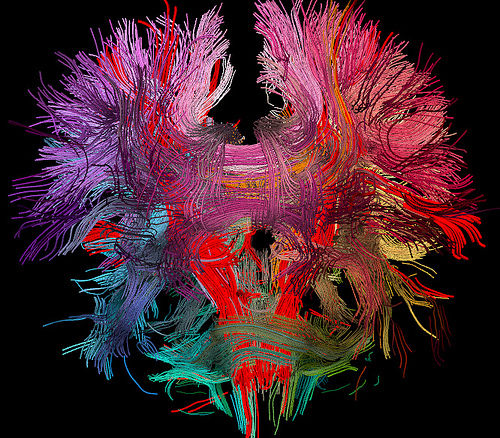
When we dedicate ourselves to being happy, we change our brains for the better.
Recently Tom Magliozzi of “Car Talk” passed away due to complications from Alzheimer’s. I loved this man’s laugh. Although I’m not what you would call a diehard car person, his gift to disarm and connect with people drew me to the show on a regular basis.
Tom was dedicated to living the life he loved, and the catalyst for that took place on a busy Boston freeway when he was in his early 20s and nearly collided with a truck. The experience propelled him to resign from his job and to become, as he called it, “a bum.” He and his brother, both MIT graduates, eventually partnered in a series of business ventures—from the Good News Garage (the name makes me smile) to “Car Talk.” And I’m delighted they did because their voices, and especially Tom’s laugh, were chicken soup for my soul after my father passed away.
What was it about Tom’s laugh that brightened my day? What does it take to increase happiness? And what does happiness do to the brain?
We have the power to increase our happiness throughout our lives. It’s a matter of choice. And when we dedicate ourselves to being happy, we change our brains for the better because the function and structure of the brain is connected to our emotions and behavior. The old school of thought posited that our brain changed but lost vitality over time. This couldn’t be further from the truth. (I love that neuroscience has advanced so much over the past 20 years that we’re able to see how the brain evolves, and better understand how systems link together.) The new school of thought says that we can engage our body to change our brain, which, in turn, changes our body.
When we partake in an activity we love, like dance, yoga or even sex, the insula deep in our brains tracks signals (sensations) from our body and transmits them back to the brain. The more the insula is activated, the more it thickens and produces additional grey matter—created when neurons wire and fire together. How cool! It’s neuroplasticity in action.
Science has also shown that the insula is part of the brain’s social system and central for empathy. When we feel another’s emotions, we actually engage the same neural circuits as the other person and feel the same feelings as well. The bottom line is that the more in tune you are with yourself, the stronger your insula; the happier you are, the more strongly you experience connections with others. It makes me happy to think that listening to a show I loved and partaking in Tom’s laugh made my insula create more grey matter.
Since we know what makes us feel good, that begs the question — Why do we spend so much time thinking about negative things? Why do we choose to play and replay movies and messages that are self deprecating and harmful to our sense of self? Negative thoughts leave neural information behind which can poison how we feel about ourselves and affect the way we connect with others. Interestingly, our brains have a natural bias toward negativity. Thanks to our ancestors who were extremely adept at survival, we have adapted to approach what’s safe but avoid what’s risky. For example, man has learned to dodge the rock and pick up the carrot; however, he’ll look for the rock before he goes for the carrot. Yes, he needs food to live, but if he doesn’t stay clear of the rocks he won’t survive to pick up the carrot. This negative bias is very effective for passing along genes but not necessarily beneficial for our quality of life.
So what can you do to increase your happiness factor and sense of connection with others? Here are some ideas:
1. Take notice of the good things that happen.
Soak up the good stuff and turn positive experiences into wonderful memories. Since we’re wired to focus more on the negative, take an active note of the positive things that happen to you during a day.
2. Remember that what wires together, fires together.
Think about something good that happened for a few seconds and allow it to seep into your being and become part of you. Takes a few seconds.
3. Finally, become aware of how you affect people.
If you lead people, watch your verbal and non-verbal language. You don’t want to set off alarms in others. Focus on developing rapport and helping people feel safe around you.
On one of those days that’s not so good, I’m going to remember Tom and his infectious laugh. I know it will put a smile on my face and warm me up inside. And if I create more grey matter along the way, I’m all for it.

